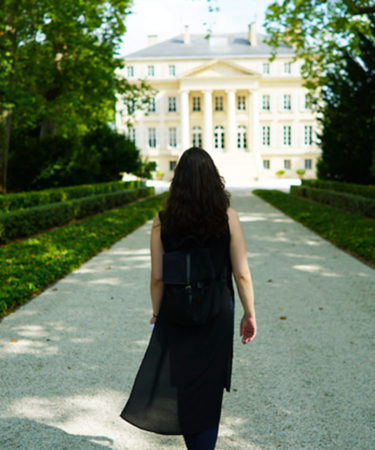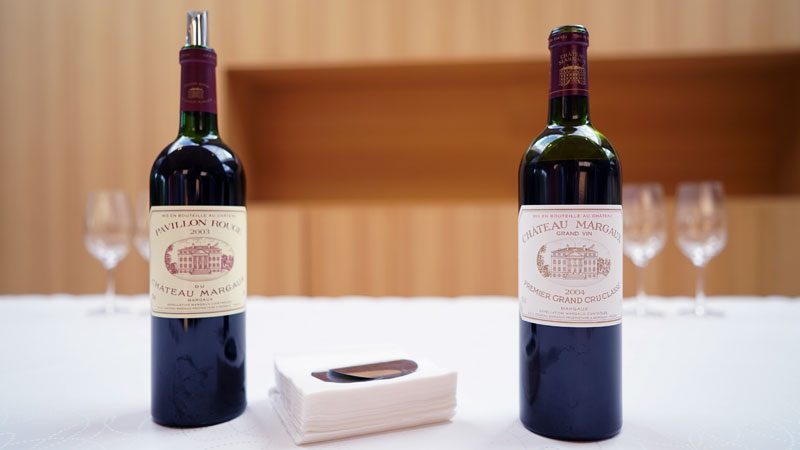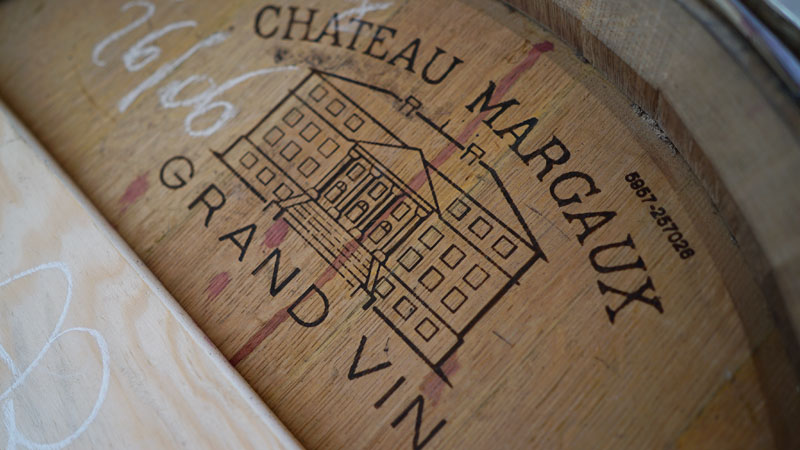Château Margaux, located on the Left Bank of Bordeaux, is one of five first-growth estates in France’s prized Medoc region. Considered the top of its class since 1855 (and even earlier — more on that later), Margaux has captured the hearts and dollars of wine collectors for centuries.
But fame didn’t exactly come easy. This storied estate bounced back from the French Revolution, the Great French Wine Blight, and the Bordeaux market crash of the 1970s. Today, Margaux produces four wines: Château Margaux; Pavillon Rouge du Château Margaux; Pavillon Blanc; and Margaux du Château Margaux. Here are 11 things you should know about Château Margaux.
Château Margaux has been around for more than 300 years.
As one of just five first-growth châteaux, Margaux has been classified as a top-tier wine since 1855. At the time of Napoleon III’s classification, Margaux was the only estate given a 20/20 rating.
Margaux’s elite status was recognized long before 1855. It appeared in an auction advertisement in the London Gazette in 1705, and its 1771 vintage was the first “claret” to appear in a Christie’s catalog. The birth of the estate traces back to the 16th century.
Thomas Jefferson was into it.
Before he was President of the United States, Thomas Jefferson was sent to Paris where he would eventually succeed Benjamin Franklin as Minister to France. During that time, Jefferson attempted to create his own hierarchy of wines. He put Château Margaux in first place. In 1784, Jefferson placed an order for Margaux on which he wrote, “There couldn’t be a better Bordeaux bottle.”
‘Margaux’ is synonymous with elevation.
This château had a name before it even had vines. In the 12th century, the land was called “La Mothe de Margaux,” or “the mound of Margaux,” signifying its elevated position in the otherwise mostly flat Medoc region. Château Margaux is also the only Bordeaux wine to bear the name of its appellation.
It’s been setting trends for centuries.
Château Margaux claims to have originated modern vinification methods. At the turn of the 18th century, a man called Berlon became the first to vinify white grapes and red grapes separately, setting the standard for many vintages to come.
Château Margaux is owned by one of France’s wealthiest women.
After the Bordeaux market crash in the 1970s, a Greek businessman named André Mentzelopoulos bought Château Margaux for just 72 million francs (about $17 million at the time). He was succeeded by his daughter Corinne Mentzelopoulos in 1980. She turned Château Margaux into a $1 billion business. With just 81 full-time employees as of May 2018, Margaux is one of the smallest billion-dollar companies in the world. The estate will be succeeded by Corinne’s daughter, Alexandra.
Château Microsoft? Mais non!
In the early 1990s, Corinne Mentzelopoulos sold financial control of the estate to the Agnelli family, the owners of Fiat. When the Agnelli family put the estate up for sale in 2003, Mentzelopoulos bought it back.
A Telegraph report at the time said French winemakers were relieved to have the estate back in French hands — it had been rumored that Bill Gates was interested in buying.
Château Margaux really sings.
The wine inspired an eponymous opera composed in 1887. An orchestral version of Château Margaux was recorded more recently, in 2015, and a comedic opera with the name played in Spain in 2017. Check it out.
It created the most expensive bottle of wine never sold.
Château Margaux 1787, a bottle from Thomas Jefferson’s collection, could have been the most expensive bottle ever sold (valued at $500,000). But when a wine merchant named William Sokolin brought the bottle to a Margaux dinner at the Four Seasons hotel in New York in 1989, a server knocked the bottle over, destroying its contents. The bottle eventually claimed $225,000 from insurers.
The walls talk: The house tells its history through its architecture.
In 1810, Margaux’s new owner, Marquis de la Colonilla, the first to own the land since it had been confiscated by the state during the French Revolution, hired architect Louis Combes to build the now-iconic château and cellars. Combes’ neo-Palladian style earned Margaux the nickname “Versailles of the Médoc.”
In 2015, a renovation project headed by Pritzker Prize-winning architect Lord Norman Foster modernized the famous cellars for the first time since they were built in 1810.
Château Margaux is going (mostly) organic.
Although it is not officially designated as such, much of Margaux’s vineyard uses organic farming methods. In 2017, 100 percent of the vines for the Grand Vin were farmed organically, according to the Wine Cellar Insider.
Just say ‘no’ to faux Margaux.
Château Margaux began laser-etching bottles in 1989 to combat counterfeiting. In 2011, the company strengthened its anti-counterfeiting program with the prooftag system, which employs lights and algorithms to compute electronic signatures on a bottle label.


